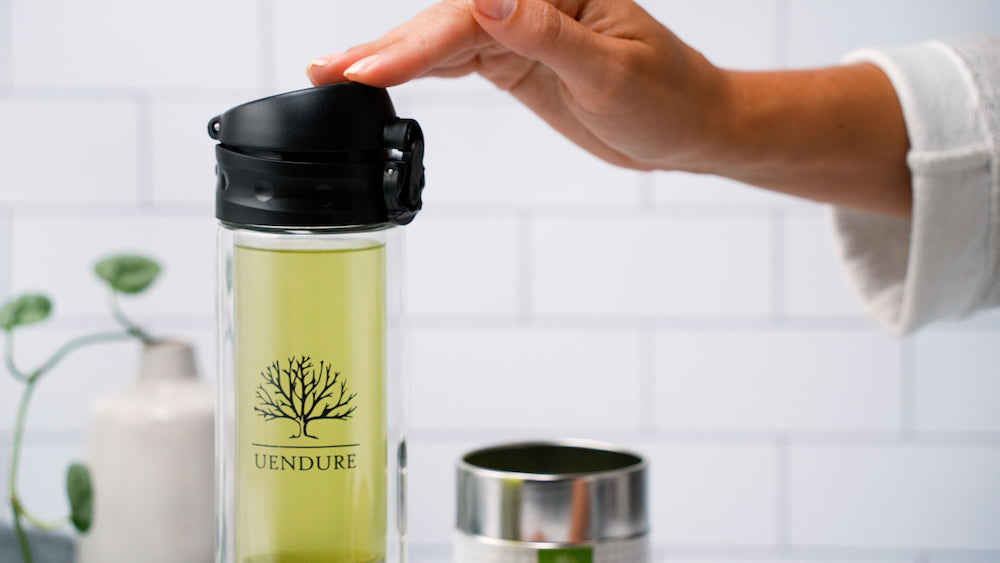Save 15% when you buy the Original Bottle Bundle!

Your skin takes the brunt of the damage of the harsh environment you encounter every day. It needs to be replenished, and what better way than with the antioxidants found in green tea and matcha. Including these ingredients in your daily diet will truly help your skin to remain healthy.
The science community has conducted vast studies which prove that aging skin is widely contributed to by the free radicals we encounter through air, water, stress and other elements that we cannot avoid. Green tea is commonly used in many health, beauty and supplemental products with the understanding that the compounds in green tea help our skin maintain a clear, healthy tone and tight, youthful feel. These compounds are crucial in keeping your skin properly nourished.
The War Within
Nourishing skin means many different things. The human body is an incredibly complicated machine operating in an incredibly complicated environment. One of the most fascinating areas of study in this field is the interplay of free radicals and antioxidants. The body produces both as part of its normal metabolic functions, but it is the impact of the environment that might tip the balance in favor of the free radicals.
That’s bad for the body and for skin in particular. Free radicals are like roving scavengers that can bind themselves to cells and inflict damage. They are produced when oxygen interacts with certain molecules, so the additional breathing that comes with exercise can create free radicals.
Because free radicals are produced naturally, the body also produces anti-oxidants that counter the impact of free radicals. A balance is struck between these two chemical compounds and good health is the result. Unfortunately, environmental factors such as pollution, radiation, pesticides, ozone and other commonly encountered toxins overwhelm the body’s ability to maintain the necessary balance.
Matcha to the rescue
That’s not an overstatement. While green tea is rich in the antioxidants, matcha has 10 times that amount. This is the result of some very specific growing techniques and careful processing of the tea leaves into matcha. It also reflects the fact that the entire tea leaf is consumed when you drink matcha.
However, this last fact is a clear double-edged sword. As stated in the previous section, pesticides cause the body to create free radicals, so any pesticides on the tea leaves find their way directly into the body when you drink matcha. This is why you should only drink USDA certified organic matcha.
The matcha must also be properly prepared. The antioxidant compounds are delicate and do not tolerate boiling water. The ideal water temperature is a matter or personal preference, since different temperatures bring out different flavors in the matcha. Recommendations range from 160 to 190 degrees. You can estimate this by letting boiling water cool for a minute or two, or you can simply check the water temperature with a kitchen thermometer.
The benefits of matcha are so well known and documented that cosmetic companies are now adding matcha as an ingredient in anti-aging creams and lotions. However, that is not a traditional use of the tea, nor does it allow the body to naturally direct the antioxidants in Japanese green tea and matcha to the places where free radicals are doing the most harm, which is internally.


